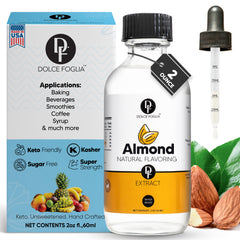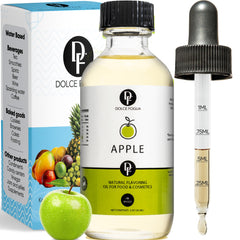
What is flavor?
Flavor is understood as the sensory impression of food or other substances and is determined by chemical senses of tastes and smells. A flavoring can be defined as a substance that gives another substance flavor by altering the characteristics of the solute which can cause it to become sweet, sour, tangy, spicy etc.
What are different types of flavor classifications?
- Natural Flavoring
- Substances that are extracted from vegetable or animal materials and are not further chemically modified or changed. I.e. Vanilla Extract
- Natural - Identical flavoring
- Substances that are chemically identical to natural substances, however they are obtained by chemical processes or by chemical modification. I.e. Vanillin
- Artificial Flavoring
- Substances that obtained through chemical synthesis or chemical modification of natural substances, but are not present in natural products.
What are Super Strength Flavors?
Often referred to as candy oils or chocolate flavoring, our Super Strength flavor line is sugar, gluten, solvent and nut-free. Our large offering of highly concentrated flavors are 8-12 times stronger than traditional extracts, and can be used in a various application that are extremely appetizing.


Dolce Foglia's super strength flavors are designed to be super concentrated with the ability to tolerate high temperatures of cooking gummies, hard candies, baked goods and frostings.
As mentioned before, this level of flavor concentrate is often considered candy oil and/or candy flavoring oil. Most of Dolce Foglia's super strength flavors are perfect for use directly in chocolates. Chocolate pairs well with oil soluble candy flavoring oils as they won't cause the chocolate to seize.
What is a Food Candy Flavoring Oil?
All of Dolce Foglia flavors are made of food grade ingredients that are approved by a regulation of the FDA, known as, FEMA GRAS (Food Extract Manufacturing Association Generally Regarded As Safe). Many of the fruity flavors are typically used for desserts, candies, gummies, fondues, and chocolate. Whereas the more herbal flavor oils like ginger, lavender, and habanero are often used for savory dishes like soups and stews.
Is candy flavoring the same as extract?
Typically, candy flavoring oil means that they are concentrated flavors that are undiluted which makes it 3-4 times stronger than extracts. If a recipe calls for 1 teaspoon of extract you'd only need 1/4 to 1/2 teaspoon of candy oil. And this is the only flavoring that is safe to use in flavoring chocolate.
How long do candy oils last?
What is the difference between flavoring and extracts?
Can you use candy flavoring oil for lip gloss/balm?
How do you add flavor to candy?
How do you use flavoring in baking?
What is the difference between oil and water soluble flavors?
OIL SOLUBLE
Dolce Foglia's Flavor Oils are perfect when your recipe or formulas require oil soluble ingredients. These oils are commonly used in the manufacture of gummies, hard candy, lip balm, candle making, and even Scratch-n-Sniff artwork!
PRODUCT USAGE
From 0.03% to 0.5% maximum. In order to calculate these numbers, you get the total weight of the batch of ingredients for the application and multiply it by these suggested use rate numbers. Best use case is to start low and work your way up to the desired use level. Over-flavoring is a common mistake made when using our concentrated flavor oils - keep in mind there is a ceiling and floor to the flavors.
Flavor Oils are used in Oil-based products, such as chocolate oil and lip balm oil:
- Concentrated
- Oil-based only
- High heat stable
- Start 0.03% to 0.5% maximum
- Ingredients - natural or organic flavor, carrier oil (coconut; more specifically, MCT Oil)
-Top 5 benefits of candy flavoring oil concentrates
Where to Buy Food Grade Flavor Oils?
You can buy Food Grade flavor oils directly on the Dolcefoglia website.


